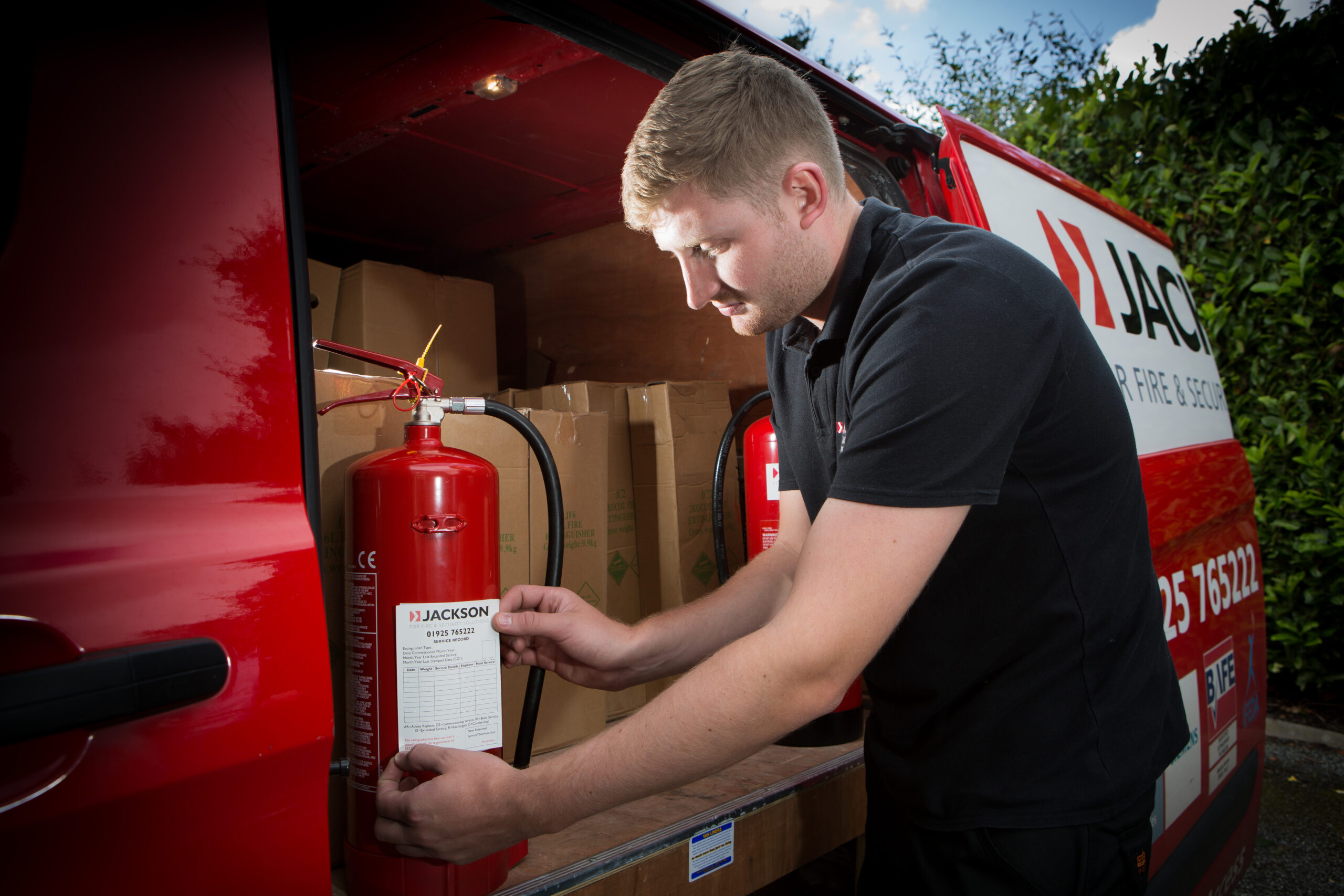We’re now onto our third article discussing some of the fire extinguisher related questions our engineers get asked by our clients (you’ll find the first two articles
here and
here). This month’s questions cover whether fire extinguishers are actually required by law, how many fire extinguishers are needed and whether there’s a particular requirement about how many fire extinguishers are required per square foot. Finally, we’ll look at which is the most suitable fire extinguisher for use in kitchens and specifically on cooking oil fires.
Are fire extinguishers required by law?
The major piece of legislation governing fire safety in England and Wales is the Regulatory Reform (Fire Safety) Order 2005. It requires any person who has some level of control in premises in relation to fire safety to take reasonable steps to reduce the risk of fire and to make sure people can safely escape if there is a fire. The first step in fulfilling this legal obligation is the completion of
fire risk assessments to identify and understand the risks then to take all necessary actions to remove or minimise those risks as far as possible. An essential part of that will involve identifying all the fire fighting equipment needed, including
fire extinguishers.
How many fire extinguishers do you need - are a specific number required per square foot or metre?
There is some basic guidance available for calculating the number of extinguishers required in some instances.
Fire extinguishers are ‘rated’ based on their ability to extinguish test fires. A commonly installed extinguisher is the Class A (for flammable solids such as paper, wood and textiles) red 9-litre water fire extinguisher. It can extinguish 1.3m of the standard wooden crib test fire so is rated 13A and is indicated as such on the body of the fire extinguisher. The British Standard 5306 provides a formula for calculating the number of Class A fire extinguishers needed. At its simplest, it involves applying the rule of thumb that one 13A extinguisher covers 200 square metres of floor area. To work out how many 13A extinguishers are required, divide the floor area by 200 then round up the figure. There should be a minimum of two extinguishers per floor (giving a combined rating of at least 26A) unless the upper floor area is less than 100 square metres and is single occupancy. In that case, only a minimum rating of 13A is required on that upper floor.
It can be a useful guide to help you understand how many fire extinguishers you’re likely to need. But don’t forget that the number (and type) of fire extinguishers depends on the nature of your business and the risks involved. Once again, the starting point is the fire risk assessments as they will help you identify all the specific risks that exist, factor in any other systems already present like sprinklers or automatic suppression systems, then identify all the specialist fire fighting equipment and particular types of fire extinguishers that will be required. We’d always advise it’s worth considering having your premises professonally assessed and getting guidance about the right types and number of fire extinguishers needed.
What fire extinguisher should you use in a kitchen – and should you use a particular fire extinguisher for cooking oil?
Unsurprisingly kitchens, particularly commercial kitchens, are potentially hazardous places from a fire perspective. Factors like cooking at high temperatures and build-up of fat and oil on equipment and surfaces all contribute towards raising the risk of fire breaking out.
If oil or other fats ignite then come into contact with a substance such as water or foam, it’s very likely the oil would splatter and the fire would actually be aggravated, not extinguished. Wet chemical fire extinguishers are specifically designed to be used on cooking oil and fat (Class F) fires. They work by discharging a chemical spray that reacts with the oil and forms a heavy soap-like layer that prevents the fire from spreading, cools the oil and puts out the fire. A wet chemical fire extinguisher is distinguished by its yellow label as well as by the long lance attached to the hose on larger extinguishers designed to reduce the risk of the user having to get too close to the hot oil. As wet chemical extinguishers are also suitable for Class A fires (flammable solids) they are the best choice of extinguisher to have available to tackle a kitchen fire.
Do you need some help identifying the most suitable fire extinguishers to use?
We’d always advise getting a professional view that’s specific to your premises to help you make the correct choices about which and how many fire extinguishers to install.
Please do feel free to contact us if you’d like an initial chat to find out more about how we can help you get the fire extinguisher provision right in your premises.
